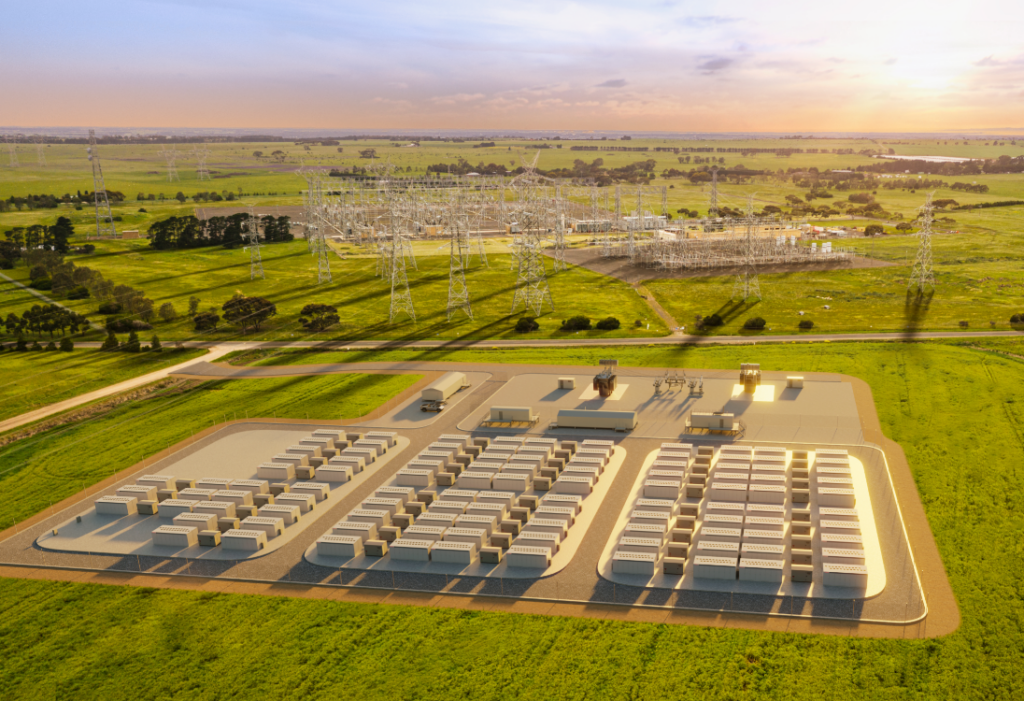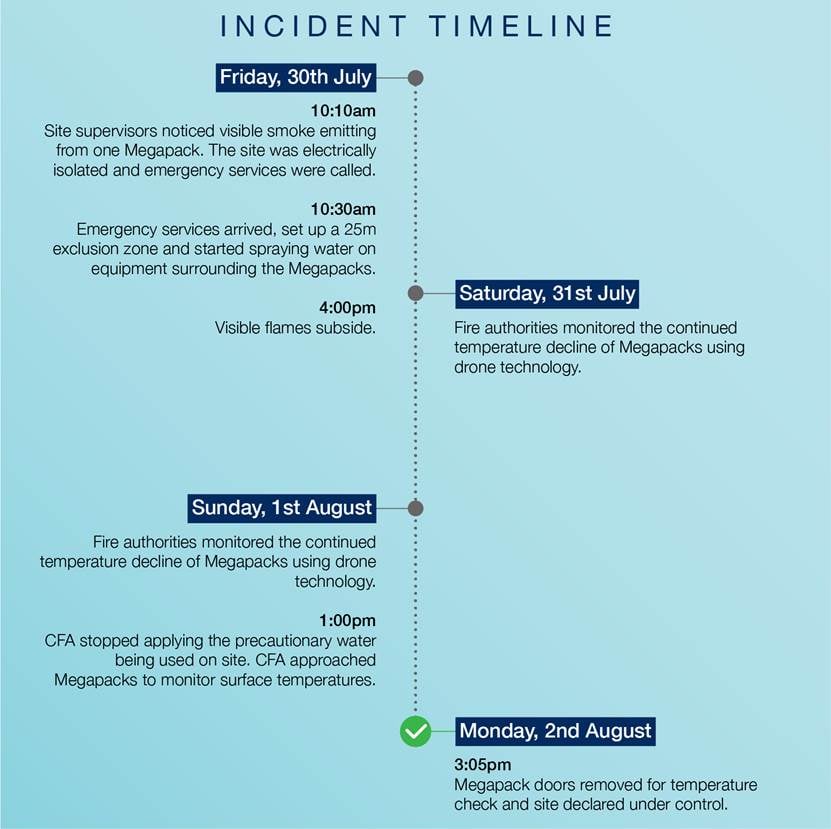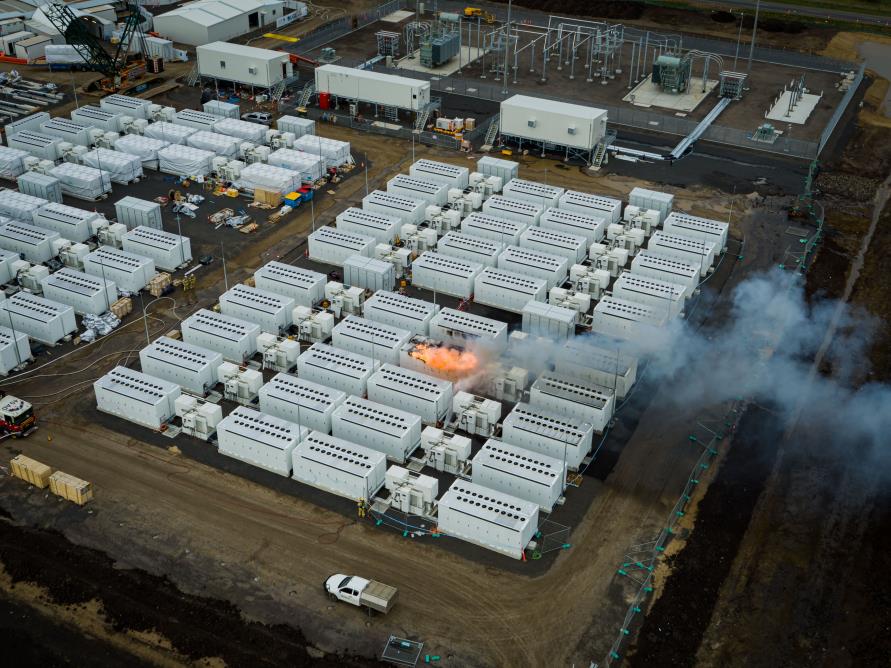
The safety regulator for Victoria, Australia, has no objections to commissioning of the Victorian Big Battery 300MW / 450MWh project resuming, after investigating a fire at the site and agreeing with steps taken to prevent it happening again.
The battery energy storage system (BESS) project, owned by developer Neoen, suffered a setback during testing in late July as it prepared to go into service, having received registration from the Australian Energy Market Operator (AEMO). The BESS will help increase electrical interconnection capacity between the states of Victoria and New South Wales by 250MW at peak times.
Enjoy 12 months of exclusive analysis
- Regular insight and analysis of the industry’s biggest developments
- In-depth interviews with the industry’s leading figures
- Annual digital subscription to the PV Tech Power journal
- Discounts on Solar Media’s portfolio of events, in-person and virtual
Shortly after 11am on 30 July, local news reports emerged that at least one Tesla Megapack BESS unit was on fire. This was later confirmed by Neoen Australia managing director Louis de Sambucy, who said that the fire had occurred at around 10am during initial testing. No one had been injured and the site was disconnected from the grid at that time.

Neoen said today in a statement sent to Energy-Storage.news that re-energisation testing is set to recommence tomorrow, 29 September after the conclusion of detailed investigations by experts from four Victoria state groups including the safety regulator for electricity, gas and pipelines, Energy Safe Victoria.
“Safety is our first priority. We have taken the time to understand the cause of the incident and we have implemented actions to ensure it will not happen again,” Louis de Sambucy said today.
The Neoen Australia managing director thanked regulatory authorities and the local fire service “for their thorough investigations” and noted that the company would be sharing lessons learned from the incident with the industry in the coming weeks, while working to complete commissioning and testing of the Victorian Big Battery.
It is aimed to get the BESS into service in time for the coming Australian summer, when electricity demand is expected to be at its highest during the year.
Energy Safe Victoria outlines causes
Energy Safe Victoria noted in a Statement of Findings that the fire had completely consumed two of the 212 Tesla Megapack battery units at the site. ESV began investigations once the local Country Fire Service responders had determined the situation to be under control.
With the cooperation of site owner Neoen and site operating contractors UGL Engineering and Tesla Motor Australia, the investigations determined that the most likely root cause was a leak within a cooling system in a Megapack.
The leak caused a short circuit and then thermal runaway within the lithium-ion batteries inside leading to fire in the Megapack, which then spread to another Megapack unit adjacent to it. Despite the two Megapack units being lost to the fire, ESV said they had “failed safely”.
The fire occurred under conditions you would not normally expect to encounter when the battery system is in use. The Megapack that first caught fire was switched to offline mode after 13 hours of use, as it was not needed at that stage of commissioning.
With the supervisory control and data acquisition (SCADA) systems for the Megapacks mapping the unit control system and sending information to operators over a 24-hour period, once the unit in question was in offline mode, operators at the site’s control facility did not receive alarms.
Also, switching it into offline mode shut down telemetry systems for monitoring the Megapack’s condition, shut the cooling system down and shut down the battery protection system including the high voltage controller (HVC), which could have disconnected the faulty unit.

Measures put in place to prevent recurrence
Six actions have been put in place to prevent such a situation happening again: full functionality and pressure testing of cooling systems before each Megapack is put into service, physical inspection for leaks of each unit, modification of the SCADA system to map the units every hour, the fitting of a new “battery module isolation loss” alarm into firmware and the automatic disconnection of any affected module, changes to procedure for taking Megapacks into offline mode that ensure telemetry remains operational and keeping the HVC in service when the key lock that takes the units offline is isolated.
Also of note is that the propagation of fire from one Megapack to another is prevented through design of the units and site layout. ESV said mitigation procedures could be applied to other Megapack projects around the world.
“The incident was most likely initiated by a Megapack coolant leak. The absence of a number of monitoring and protection systems that would have been available had the initial Megapack not been subsequently switched to off-line service mode allowed the initial fault to go undetected and resulted in the total loss of two Megapacks.
The affected Megapacks failed safely despite total loss,” ESV said in its conclusion of the findings statement.
ESV had advised Tesla that the regulator has no objection to recommencing commissioning of the Victorian Big Battery as long as the mitigation and prevention measures are in place, it said. It did however remind the company of its general duties relating to Victoria’s Electricity Safety Act 1998, which refers to owners and operators of complex electrical installations.
Investigation — by Tesla — into what caused propagation to the second affected Megapack is still ongoing and the tech company must hand over its findings to the regulator, while ESV said it is also now going to determine if any breaches of the Electricity Safety Act 1998 or supporting regulations took place. Enforcement action could be warranted if this is found to be the case.
Neoen said that Tesla has already implemented measures including firmware enhancements to improve detectability and associated fault protection of this type of event, which the company said remains rare.
The developer also noted that independent expert groups Energy Safety Response Group (ESRG) and Fisher Engineering are compiling their learnings from the event. Due in November, an Independent Report will provide information and insights, which can help fire management and emergency responders and support industry and authorities learn more about how to safely deploy and operate energy storage technology.
In early September, part of the world’s biggest BESS project, at Moss Landing in California, had to be taken offline after overheating was found in battery racks supplied by LG Energy Solution, triggering fault warnings and safety features. No fire was reported but the 300MW / 1,200MWh Phase 1 of the 400MW / 1,600MWh project had to be shut down while the incident is investigated, only a few short weeks after Phase 2 went into action. Phase 2 is still operational.
The Victorian Big Battery project is the latest in an ongoing relationship between Tesla and Neoen. Their most famous battery storage collaboration, Hornsdale Power Reserve in South Australia, went online in November 2017 and Neoen said it has saved the local region AU$150 million (US$109.31 million) in the cost of frequency control ancillary services (FCAS) that keep the grid stable.
However, AEMO said recently that the BESS failed to deliver FCAS that were promised over a four-month period in October and proceedings have been initiated by the Australian Energy Regulator in the Federal Court for the alleged breach of National Electricity Rules.
Read “What the fire service wants you to know about your battery,” a contributed article to this site from some of the team at ESRG.






